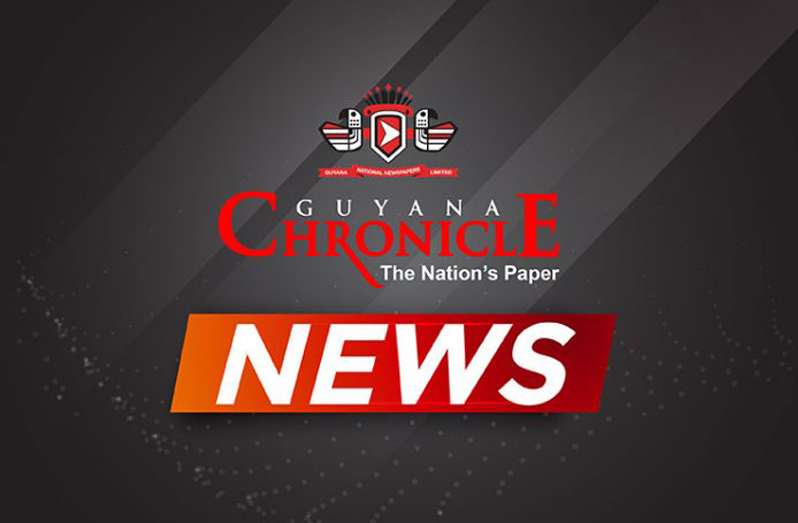Guyanese Writers of African Descent (Part VIII)
IN KEEPING with UNESCO’s proclamation designating 2011 as ‘International Year of People of African Descent’, we now embark on a series of articles highlighting Guyanese Writers of African Descent who have made significant contribution to our literature.
There are many pitfalls and shortcomings associated with listing, grouping and categorising; straightway, I apologise for omissions or any other deficiencies. Of course, I may stumble here, and, of course, I would depend on your support in supplying necessary information so we are all the wiser in the end.
So far, we have looked at Ivan Van Sertima, N. E. Cameron, Eric Walrond, ER Braithwaite, Jan Carew, O. R. Dathorne and Beryl Gilroy, getting a feel from whence we came, how we have evolved within new constraints, and how we have had to struggle, and are still struggling, to enjoy inherent human rights.
This continuous battle was, and still is, fought on many fronts, with various instruments of engagement, chief amongst them the pen.
We now take a look at an academic and artist whose opinions were not always well-received, but was respected, nevertheless, as he toiled to substantiate his theories with numerous publications and exhibitions.
Denis Williams Denis Williams was a remarkable Guyanese, who effectively merged science and art.
Denis Williams was a remarkable Guyanese, who effectively merged science and art.
Artist, art historian, archaeologist, anthropologist, biographer and novelist, Denis Williams was born on February 1, 1923 in Georgetown, the capital city of Guyana.
He lived on three continents at crucial times: Times of intellectual upsurge; times of political ferment; and times of creativity in arts. Williams was caught up in the action wherever he went, sharpening his perception of the living and the past as reflected in the innovations found in his art, craft and writing.
Denis Williams was educated in Georgetown, passing his Senior Cambridge School Certificate in 1941. Awarded the British Council’s first scholarship in the colony to study art in Britain, he became a Fine Arts student at the Camberwell School of Art, between the years 1946 and 1948 — the post-World War II years.
In 1949, he returned to Guyana, where he worked on a series of his paintings under the title, ‘Plantation Studies, Origins, Burden and Release’, which was not well-received in certain quarters.
Unable to settle, and unable to land a proper teaching job, he headed back to England where he enjoyed many years of success. Yet he was unfulfilled. This state would manifest itself again and again in his life, urging him dig deeper in his search and research, constraining him to move from land to land.
Wasting no time on his return to the UK, Williams was able, by December 1950, to put on an exhibition at Gimpel Fils, the success of which opened the way for him to become visiting tutor at the Slade School of Fine Art, University College, London, and lecturer at the Central School of Art, Holborn.
Another turning point in his life came with the longing to find out ‘Who Am I’, leading him to Africa, first Sudan in the northeast, and then other parts of that continent.
From 1957 to 1962, he lectured in Fine Arts and Art History at the Technical Institute of African Studies, in the Sudanese capital, Khartoum.
These years provided his first experience in archaeology and material for his first novel, OTHER LEOPARDS, first published by New Author Limited, an imprint of Hutchinson, 1963. This novel was recently reprinted by Peepal Tree Press.
Moving to Nigeria in 1962, he lectured in African Studies at the University of Ife, and at the University of Lagos. At both universities, he edited journals in African Studies, and started museum collections of African artefacts. This African sojourn was quite productive for Williams, because it was during this time that he published his monumental, if controversial, work, ‘ICON and IMAGE: A Study of Sacred and Secular Forms in African Classical Art’, published in 1974. Williams also published his second novel, THE THIRD TEMPTATION, while in Nigeria, which is another innovative bit of writing, experimenting with the nouveau roman technique.
After his sojourn in the land of his ancestors, Williams returned, in the late 1960s, to Guyana, the land of his birth. He soon became the prime mover of art in this country, especially by offering encouragement to Indigenous artists.
He founded and became the first principal of the Burrowes School of Art; and founded and was a director of the Walter Roth Museum of Anthropology.
While he was in the primordial haven, the interior of Guyana, he started a third novel, THE SPERM of GOD, examining the “mongrel, polyglot society” of the New World, where there is no “purity of sperm.”
Dr. Denis Williams died on June 28, 1998, yet his legacy lives on: In 2004, his book, PREHISTORIC GUIANA was published by Ian Randal at the behest of the Ministry of Culture, Youth & Sport.
WHAT’S HAPPENING:
· World Poetry Day (March 21) 2011 will be celebrated on Wednesday, March 23, at the Umana Yana on upper High Street, Kingston; all are invited.
· World Storytelling Day (March 20) 2011 will be celebrated on Wednesday, March 16. The venue for this event is the National Library Conference Rom. Time: 17:00h. Apart from interesting stories from around the world, there will be an emphasis on stories from Guyana like the Anancy Story, the Balgobin Story, the jumbie story, Sensible & Stupidy Bill among others. All are invited to Guyana’s fist celebration of World Storytelling Day.
(To respond to this author, either call him on (592) 226-0065 or send him an email: oraltradition2002@yahoo.com)



.jpg)








